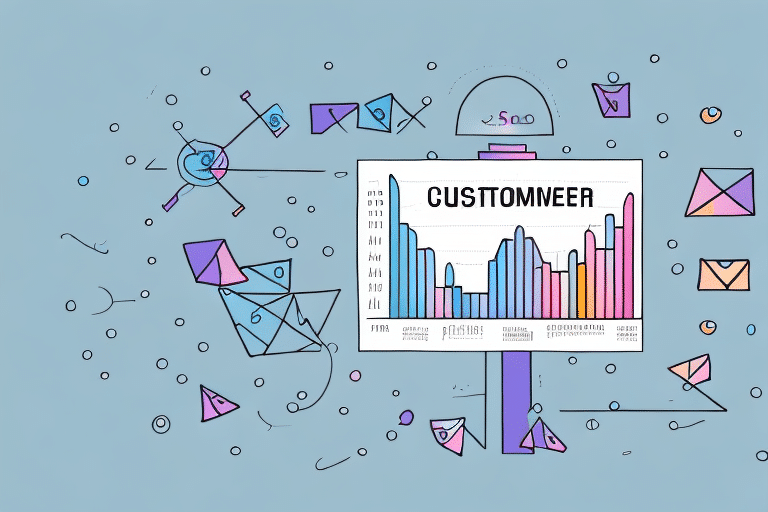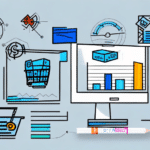Creating an Effective Customer Retention Report
As businesses strive to grow and increase revenue, it's important not to overlook the significance of customer retention. Customer retention reports provide valuable insights into customer behavior, preferences, and needs, helping businesses create targeted strategies to keep customers coming back. In this article, we'll explore why customer retention reports are crucial for your business, key metrics to measure, how to collect and analyze data, best practices for creating actionable reports, as well as tools and examples from leading brands.
Why Customer Retention Reports Matter for Your Business
Retaining customers is significantly less expensive than acquiring new ones. According to research from Bain & Company, increasing customer retention rates by just 5% can lead to a 25-95% increase in profits. Customer retention reports help businesses identify loyal customers and those at risk of churning, enabling tailored strategies to retain and engage them effectively.
Additionally, these reports offer insights into customer behavior and preferences. By analyzing interactions and purchase data, businesses can identify patterns that inform product development and marketing strategies. For instance, if a majority of loyal customers frequently purchase a specific product, expanding or promoting that product line could drive further growth.
Furthermore, retention reports highlight areas for improving customer service and support. Tracking customer satisfaction and feedback allows businesses to address common pain points proactively, enhancing customer loyalty and fostering positive word-of-mouth recommendations.
Key Metrics to Measure in a Customer Retention Report
When creating a retention report, it's essential to track key metrics that provide actionable insights. Some critical metrics include:
- Customer Lifetime Value (CLV): The total revenue a business can expect from a single customer over their relationship.
- Churn Rate: The percentage of customers who stop using your product or service during a specific time frame.
- Customer Satisfaction Scores (CSAT): Measures how satisfied customers are with your products or services.
- Repeat Purchase Rate: The proportion of customers who make multiple purchases over time.
- Net Promoter Score (NPS): Assesses customers' likelihood to recommend your business to others.
Tracking these metrics over time and segmenting the data by customer groups or products helps identify trends and patterns, enabling the creation of targeted retention strategies.
For instance, a high Net Promoter Score (NPS) indicates strong customer loyalty and satisfaction, while a declining NPS may signal issues that need addressing to improve retention.
How to Collect and Analyze Data for Your Customer Retention Report
Data Collection Methods
Begin by collecting data through various methods such as:
- Surveys and questionnaires
- Customer feedback forms
- Website and app analytics
- Customer relationship management (CRM) systems
Data Organization and Analysis
Once collected, organize the data using spreadsheets or data visualization tools like Tableau or Microsoft Power BI. Analyze the data to identify patterns and correlations that reveal the root causes of customer churn or loyalty.
Ensure data accuracy and reliability by using multiple data sources and cross-checking results. Keeping data up-to-date and relevant is crucial for accurate analysis and actionable insights.
Developing Retention Strategies
Use the analyzed data to develop retention strategies tailored to your target audience's needs and preferences. Strategies might include offering personalized incentives, improving customer service, or enhancing the overall customer experience. Regularly monitor and evaluate the success of these strategies to ensure their effectiveness.
Tips for Creating an Actionable Customer Retention Report
Make the Report Digestible
Ensure the report is easy to understand by including clear visuals such as charts and graphs. Use headings, bullet points, and concise language to present the information effectively.
Include Actionable Insights
Provide insights that can directly inform business decisions. Suggest potential next steps based on the data, such as targeting specific customer segments or adjusting marketing campaigns.
Segment Your Data
Break down the data by different customer groups, such as demographics, purchase history, or behavior patterns. This allows for more precise and effective retention strategies tailored to each segment.
Best Practices for Sharing Your Customer Retention Report with Your Team
Highlight Key Takeaways
Emphasize the most important findings and recommended actions. Use summary sections or executive overviews to make key points stand out.
Present the Report Effectively
Conduct meetings or presentations to review the report with your team, allowing for questions and discussions. Use visual aids to enhance understanding and engagement.
Ensure Accessibility
Make the report accessible to all team members through shared drives or project management tools. This ensures everyone has access to the information needed to implement strategies.
Tailor the Presentation to Your Audience
Customize the presentation based on the audience's level of understanding and interest in the data. Provide additional context or simplified explanations as needed.
Follow Up and Track Progress
Regularly review the report and track progress over time. Schedule follow-up meetings to discuss updates and adjust strategies based on new data.
How to Use Insights from Your Customer Retention Report to Improve Your Business Strategy
Enhance Customer Experience
Utilize insights to improve the overall customer experience. For example, if data indicates dissatisfaction with customer service, prioritize improving service processes.
Identify Behavioral Trends
Analyze customer behavior trends to better understand their needs and preferences. Tailor products and services to align with these insights, increasing satisfaction and retention.
Targeted Marketing Campaigns
Create marketing campaigns aimed at specific customer segments identified as at risk of churning. Personalized campaigns can effectively address their unique needs and encourage loyalty.
Upselling and Cross-Selling Opportunities
Use purchasing behavior data to identify opportunities for upselling and cross-selling, enhancing revenue from loyal customers while providing them with additional value.
Common Mistakes to Avoid When Creating a Customer Retention Report
Focusing on Vanity Metrics
Avoid emphasizing metrics that do not directly impact retention, such as social media followers. Instead, concentrate on metrics that provide meaningful insights into customer loyalty and behavior.
Relying Solely on Automated Tools
While automated data collection tools are useful, they may not capture the complete picture. Incorporate qualitative data, such as customer feedback, to gain deeper insights.
Neglecting Data Segmentation
Failing to segment data by customer demographics, behavior, or purchase history can result in less effective retention strategies. Segmentation allows for more precise targeting and strategy development.
Overlooking Qualitative Data
Quantitative metrics are important, but qualitative data like customer reviews and feedback provide valuable context that can inform more nuanced retention strategies.
Tools and Resources to Help You Create a Comprehensive Customer Retention Report
Customer Relationship Management (CRM) Software
Tools like Salesforce and HubSpot CRM help manage and analyze customer interactions and data throughout the customer lifecycle.
Survey and Feedback Tools
Platforms such as SurveyMonkey and Typeform facilitate the collection of customer feedback and satisfaction data.
Analytics and Data Visualization Platforms
Tools like Google Analytics, Tableau, and Microsoft Power BI enable detailed data analysis and visualization to uncover trends and patterns.
Educational Resources
Online courses and resources from platforms like Coursera and Udemy offer training on best practices in retention reporting and data analysis.
Examples of Effective Customer Retention Reports from Leading Brands
Looking to leading brands for inspiration is a great way to enhance your retention reporting and uncover insights that can drive your business forward. For example:
- Airbnb: Regularly collects and analyzes data to improve the guest experience and encourage repeat bookings by personalizing recommendations and optimizing the booking process.
- Starbucks: Utilizes customer data to create personalized recommendations and rewards, fostering loyalty through its rewards program and targeted marketing efforts.
- Amazon: Tracks customer behavior and preferences to provide personalized product recommendations and offers, enhancing customer satisfaction and increasing the likelihood of repeat purchases.
- Netflix: Analyzes customer viewing habits and preferences to create targeted content and recommendations, helping to retain subscribers by aligning offerings with their interests.
Overall, creating an effective customer retention report requires careful planning, data collection and analysis, and effective communication with the team. The insights gained from a comprehensive report can help businesses improve customer satisfaction and retention, ultimately leading to increased profits and long-term success.






















